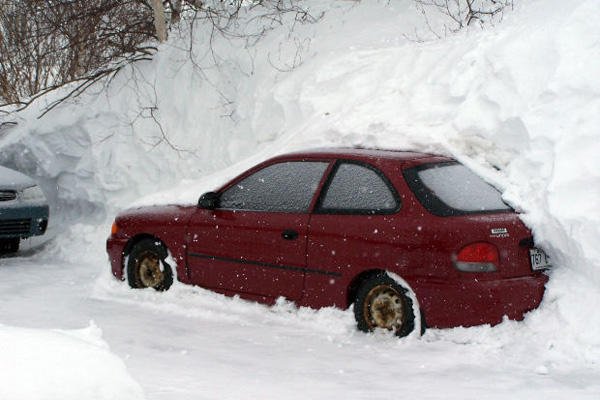This content is provided courtesy of USAA.
When it's freezing outside, a breakdown could become far worse than a mere inconvenience. To help prevent car trouble, the Federal Emergency Management Agency suggests you or your mechanic follow these 12 checkpoints to winterize your vehicle:
- Engine antifreeze. Check levels and add more, if necessary.
- Battery. When starting the car, pay attention to see if it starts without hesitation. Check positive and negative terminals for corrosion and powdery buildup. The terminals may need to be cleaned, or it could be time to replace the battery.
- Brakes. Check for excessive wear and add brake fluid, if necessary.
- Exhaust system. Repair or replace any leaks and crimped pipes.
- Fuel and air filters. Replace them according to your vehicle's maintenance schedule.
- Fuel. Always keep plenty of gas in the tank, both to avoid running out and to prevent fuel lines from freezing.
- Heater and defroster. Test both systems to make sure they blow warm air. Testing an electric defroster (found in many rear windshields) might require the help of a mechanic, or you could simply wait for the next time the windshield fogs up.
- Lights and flashing hazard lights. Check and replace any that are dim, fogged or not working.
- Oil. Check the level and add oil, if necessary. You can find the recommended level in your owner's manual.
- Thermostat. Watch the temperature gauge on your dashboard — it should stay near the center line under normal driving conditions. If the needle goes much higher or lower, it could be a sign of a faulty thermostat, which could lead to engine trouble.
- Windshield wiper equipment. Repair any problems and maintain the proper level of washer fluid. Fill the windshield washer reservoir with antifreeze solution, which can be purchased at most auto parts stores.
- Tires. Replace them if they are excessively worn. All-weather radials are usually adequate for winter conditions, though some especially inclement regions have laws requiring vehicles to be equipped with chains or snow tires.










